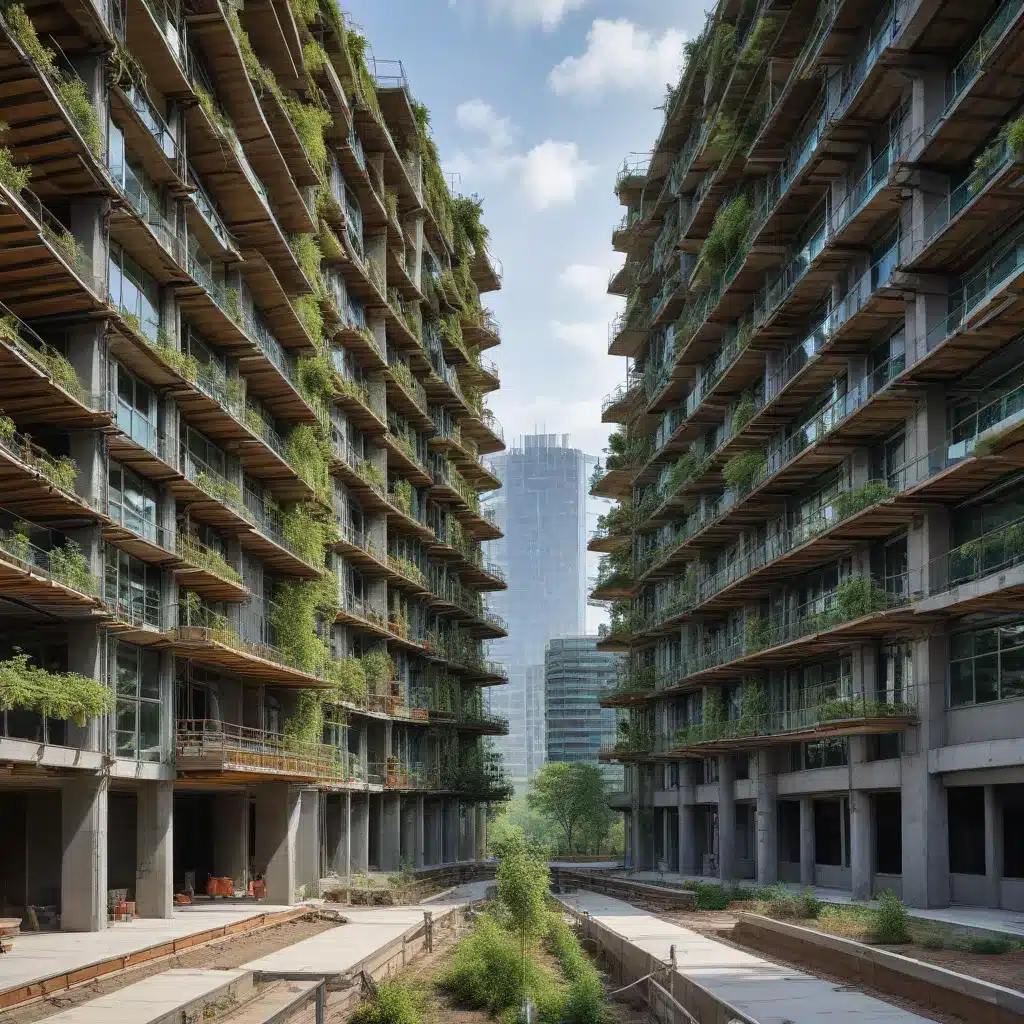
Leveraging Digital Twins and BIM for Optimized Design, Construction, and Operation of Green Buildings
As the European Union continues its ambitious push towards a sustainable, low-carbon future, the construction industry is at the forefront of this transformative shift. The design, construction, and operation of green buildings have become a crucial part of Europe’s decarbonization efforts, and the integration of digital twins and Building Information Modeling (BIM) is proving to be a game-changer in this space.
Defining Digital Twins
A digital twin is a virtual representation of a physical asset, process, or system that can be used to simulate, analyze, and optimize its performance. In the context of green buildings, a digital twin acts as a comprehensive, real-time model that encompasses the building’s design, construction, and operational data, enabling stakeholders to make informed decisions and drive continuous improvements.
Applications of Digital Twins in Green Buildings
The application of digital twins in the green building sector spans the entire lifecycle of a structure, from the initial design and construction phases to its ongoing operation and maintenance. By integrating digital twins with BIM, stakeholders can unlock a wealth of benefits that contribute to the creation of more sustainable, energy-efficient buildings.
Integration of BIM with Digital Twins
The synergy between BIM and digital twins is particularly powerful, as BIM provides the foundational data and 3D modeling capabilities that form the basis of the digital twin. BIM serves as the digital representation of the physical building, capturing its geometry, materials, and spatial relationships. When coupled with real-time sensor data and other operational information, this BIM-based digital twin becomes a dynamic, responsive model that can optimize the building’s performance throughout its lifecycle.
Optimized Design for Green Buildings
One of the primary benefits of integrating digital twins and BIM in the design phase is the ability to simulate and optimize the building’s sustainability and energy efficiency. Architects, engineers, and sustainability experts can leverage this technology to explore various design scenarios, evaluate energy consumption patterns, and incorporate renewable energy solutions, all before the first brick is laid.
Sustainability Considerations
By using digital twins, designers can assess the building’s environmental impact, including its carbon footprint, water usage, and waste generation. They can then make informed decisions to incorporate sustainable materials, passive design strategies, and renewable energy systems, such as solar panels and heat pumps, to minimize the building’s overall environmental footprint.
Energy Efficiency Strategies
Digital twins allow for detailed energy modeling and simulation, enabling designers to fine-tune the building’s orientation, window placement, insulation levels, and other energy-saving features. This optimization process ensures that the final design maximizes energy efficiency, reducing the building’s reliance on grid-supplied electricity and fossil fuels.
Modeling and Simulation
The integration of digital twins and BIM empowers designers to create highly accurate, data-driven models that can be extensively tested and refined before construction begins. This virtual prototyping phase helps identify and resolve potential issues early on, ultimately leading to more efficient, cost-effective, and sustainable building designs.
Construction Optimization with Digital Twins
During the construction phase, digital twins and BIM continue to play a crucial role in enhancing efficiency, reducing waste, and ensuring the seamless integration of various trades and systems.
Construction Process Monitoring
By overlaying the digital twin with real-time data from sensors and IoT devices, construction managers can monitor the progress of the build, track material deliveries, and optimize the workflow. This visibility helps identify and address bottlenecks, minimize delays, and ensure that the project stays on schedule and within budget.
Supply Chain Optimization
The digital twin’s ability to simulate and visualize the construction process also extends to the supply chain. Contractors can use this technology to optimize the procurement and logistics of building materials, ultimately reducing waste and improving overall efficiency.
Automated Assembly and Fabrication
In some cases, digital twins can be integrated with robotic and automated construction systems, enabling the prefabrication of building components off-site and their seamless on-site assembly. This approach not only enhances precision and quality but also minimizes construction waste and emissions associated with traditional building methods.
Operational Efficiency of Green Buildings
The benefits of digital twins and BIM extend well beyond the design and construction phases, as they play a crucial role in the ongoing operation and maintenance of green buildings.
Building Performance Monitoring
By continuously monitoring the building’s performance through sensors and other data sources, the digital twin can provide real-time insights into energy consumption, indoor environmental quality, and overall operational efficiency. This information empowers facility managers to identify areas for improvement and make data-driven decisions to optimize the building’s performance.
Predictive Maintenance
The digital twin’s ability to track the condition and performance of building systems and equipment can enable predictive maintenance strategies. By anticipating and addressing issues before they become critical, facility managers can minimize downtime, extend the lifespan of assets, and reduce maintenance costs.
Energy Management
Integrating the digital twin with building automation systems and energy management platforms allows for advanced energy optimization. Facility managers can use this technology to monitor and control energy-consuming systems, implement demand-response strategies, and explore opportunities for further energy efficiency improvements.
As the European Union continues its push towards a more sustainable future, the integration of digital twins and BIM in the design, construction, and operation of green buildings has become a critical enabler. By leveraging these powerful technologies, stakeholders can create buildings that are not only environmentally friendly but also operationally efficient, cost-effective, and responsive to the evolving needs of their occupants. As the industry continues to embrace these innovations, the potential for a truly sustainable, digitally-driven built environment in Europe becomes increasingly within reach.







